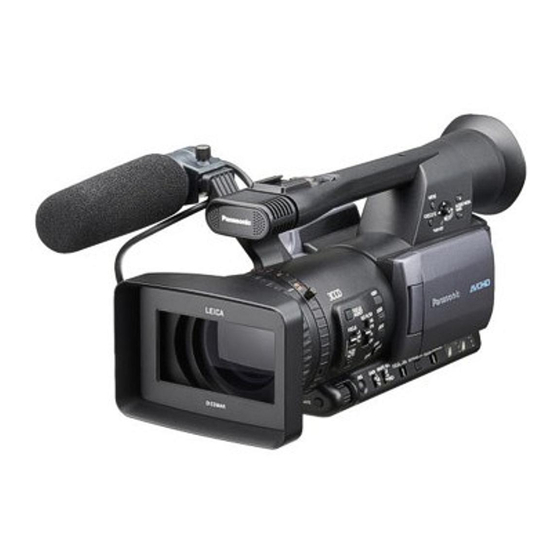For example, if proper exposure of the scene requires
the lens to be set at f/16, by setting the ND lter
switch to the 1/16 setting would allow you to use a
lens aperture of f/4. e ND lter is handy when you
want to shoot with the lens at a very wide aperture
(e.g. f/2) for shallower depth of eld.
Adjusting white balance
White light is actually a mix of all the visible
wavelengths. White light can be reproduced with a
mixture red, green, and blue (RGB) light, so the
camera uses three CCD chips and color lters to
record the red, green, and blue components of the
scene. But what combination of the red, green, and
blue light constitutes white? e camera does not
know. Daylight is rich in blue. Incandescent lighting
is rich in red.
In order to reproduce white accurately, the camera
needs to adjust the ratio between the three RGB
primary colors. If the white balance is not adjusted
properly, white will be reproduced with a color cast,
most likely bluish in a daylight situation or yellowish
in an interior situation. When shooting in manual
mode, you can tell the camera what white is by either
setting the the white balance to a xed setting for
either daylight (5600K) balanced light sources or
Tungsten (3200K) balanced light sources. e third
alternative is to point the camera at a white card in
the scene under typical illumination and set the white
balance setting to correspond to that white card.
You can save adjustments and reselect them by setting
the WHITE BAL switch to the A or B position or
you can use the preset (daylight or tungsten) values,
depending on the shooting conditions.
Setting the white balance. To set the white balance,
follow these steps:
1. Make sure that the AUTO/MANUAL switch is set
to manual mode.
2. Make sure the shutter speed has already been set as
desired (see page 46 in the manual).
3. Place a white card in the scene under the same
lighting conditions and light source as the subject
you will be shooting. Zoom into the white card
and ll the frame with white. Something white
like a piece of paper, a wall, or a white shirt near
the subject can be used in a pinch. Make sure not
to include bright highlights in the shot.
4. Set the WHITE BAL switch to position A or B
(whichever preset you want to use to save this
particular white balance setting).
Introduction to the Panasonic AG-HMC150 AVCHD camcorder (rough draft)
5. Press the AWB button on the front of the camera.
6. e white balance adjustment takes a few seconds.
During the process, you'll see AWB
on the screen, and when complete, it will display
AWB
ch OK (
will be A or B depending on the
X
X
preset you're using). If there was a problem setting
the white balance, you'll see AWB Ach NG.
Getting an error message usually means that the
white balance adjustment failed due to low light
conditions or the particular light mixture is outside
the bounds of the camera's ability to correct the color.
e message may say LOW LIGHT as a result of low
light conditions or LEVEL OVER in the case of an
overexposed scene.
White balance cannot be adjusted if the ATW (Auto
Tracking White) function is enabled. If you have set
ON under ATW on the AUTO SW setting menu
screen, ATW will be active when auto mode has been
established regardless of the WHITE BAL switch
position.
Using the white balance presets
If you're working under controlled lighting
conditions, you can choose one of the presets. Here's
how to use the presets:
1. Make sure the AUTO/MANUAL switch is set to
manual mode.
2. Set the WHITE BAL switch to PRST. e current
white balance setting appears in the view nder
(either 3200K for indoors tungsten balanced
lighting or 5600K for outdoors daylight or
daylight balanced arti cial lighting).
3 Press the AWB button, you'll see that the white
balance setting toggles between 3200K and 5600K
each time you press the AWB button in the PRST
mode.
Black balance adjustment
In order to reproduce blacks accurately, black
balancing adjusts the zero level of all three primary
colors (RGB). If the black balance is not adjusted
properly, shadow details will be reproduced with a
color cast. It is not normally necessary to adjust the
black balance, however, you should adjust it when:
1. You use the camera for the rst time.
2. You use the camera after not using it for a long
time.
3. e ambient temperature changes greatly.
http://kino-eye.com/dvb/
ch ACTIVE
X
11 / 35

